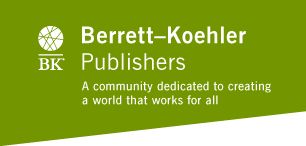Preface
About This Book
Chapter 1: The Language of Leadership
Leadership and the Tech Revolution
Individuality and Equality
What Is Peer-to-Peer Computing Technology and How Is It Related to Leadership?
The Difference between a New Theory and a Paradigm Shift
Summary
Chapter 2: Node Community
What Is a Node Community?
The Power of Node Communities:
Instant Information Sharing
Power to Create Change and the Dangers of Misinformation
Disruption of Traditional Communication Models 26
ON THE P2P PATH: Giant Hydra
The Value of Node Communities in Organizations
Efficient and Effective Flow of Information
The Expertise of the Whole Community
Nimbleness and Response to Change
Real-Time Feedback and Dialogue
Summary
Chapter 3: Organizational Equipotency
The Power of Equipotency in Organizations
All Nodes Are Created Equal: Everyone Leads and Everyone Follows
Driven by Communication (Nodes)
The Value of Equipotency in Organizations
Serving as an Enabler
Driving Commitment
Engendering Positive Intent
Motivating Everyone to Give Their Best
Implications for Organization Design
ON THE P2P PATH: BMW Designworks
Implications for a New Leadership Paradigm
Summary
Chapter 4: Relational Dynamics
ON THE P2P PATH: Google
Relational Dynamics
ON THE P2P PATH: Stiletto Network
The Value of Relational Dynamics
People, Information, and Connections
Organizational Anarchy
Shared Decision Making and Governance
Implications for a New Leadership Paradigm
Summary
Chapter 5: From Survival of the Fittest to Survival of the Connected
Darwin Misinterpreted
Adaptation and Mitigation
Protective Processes
Solving Problem Solving
Summary
Chapter 6: The Flow of Information
Traditional Barriers to Communication
Day-to-Day Sharing: Network as Communication Infrastructure
Benefits of the Open Transfer of Information
Summary
Chapter 7: Nimbleness and Change
P2P and Drivers for Change
The Space and Time for Change
The Evolutionary Model
The Dialectical Model
The Teleological Model
The Life Cycle and Cultural Models
A Case for P2P Architecture: Herman Miller
Summary
Chapter 8: Real-Time Feedback and Dialogue
Starbucks: Two Observations, Two Outcomes
ON THE P2P PATH: NYU—A Global Network University
A Better Way
Summary
Chapter 9: Implications for Organization Design
Why is P2P Architecture Important?
The Work Experience
ON THE P2P PATH: Hot Spots Movement
The Work Environment
Summary
Chapter 10: Implications for Leadership
Organization Formation
ON THE P2P PATH: ROWE
Human Resources and Organization Development
Questioning Traditional Leadership
Leadership as a Dyad Exchange Structure
Summary
Moving Forward
ON THE P2P PATH:: Paul Polman at Unilever
Notes
Acknowledgments
Index 165
About the Author 169
 2 items in cart
2 items in cart









